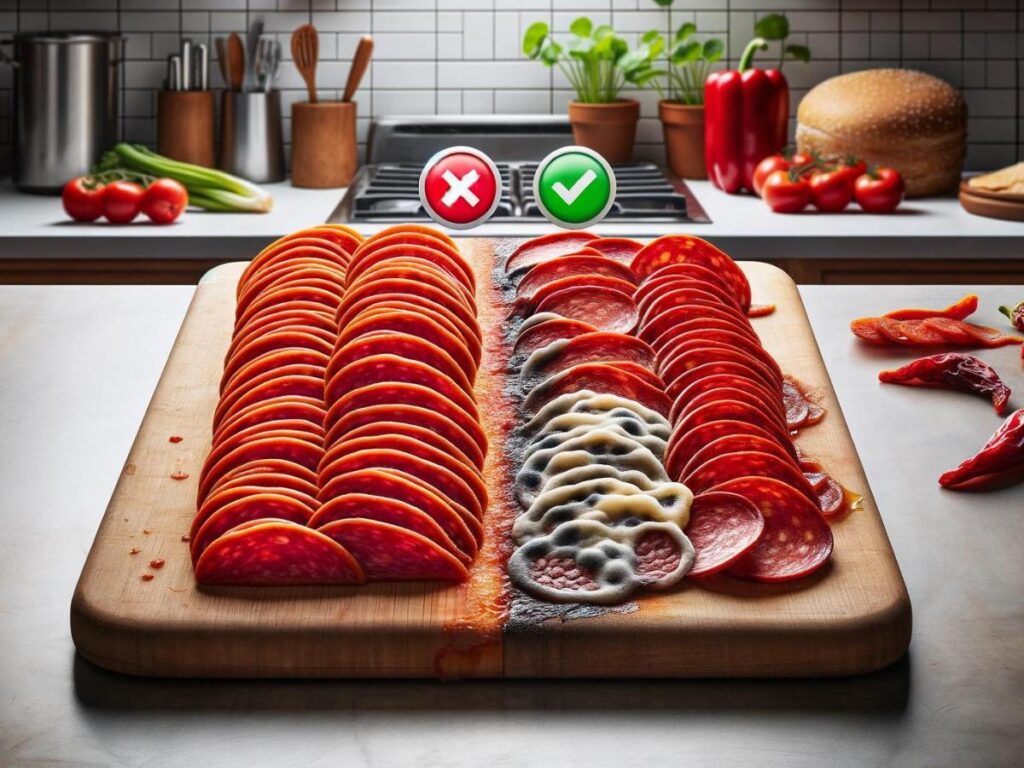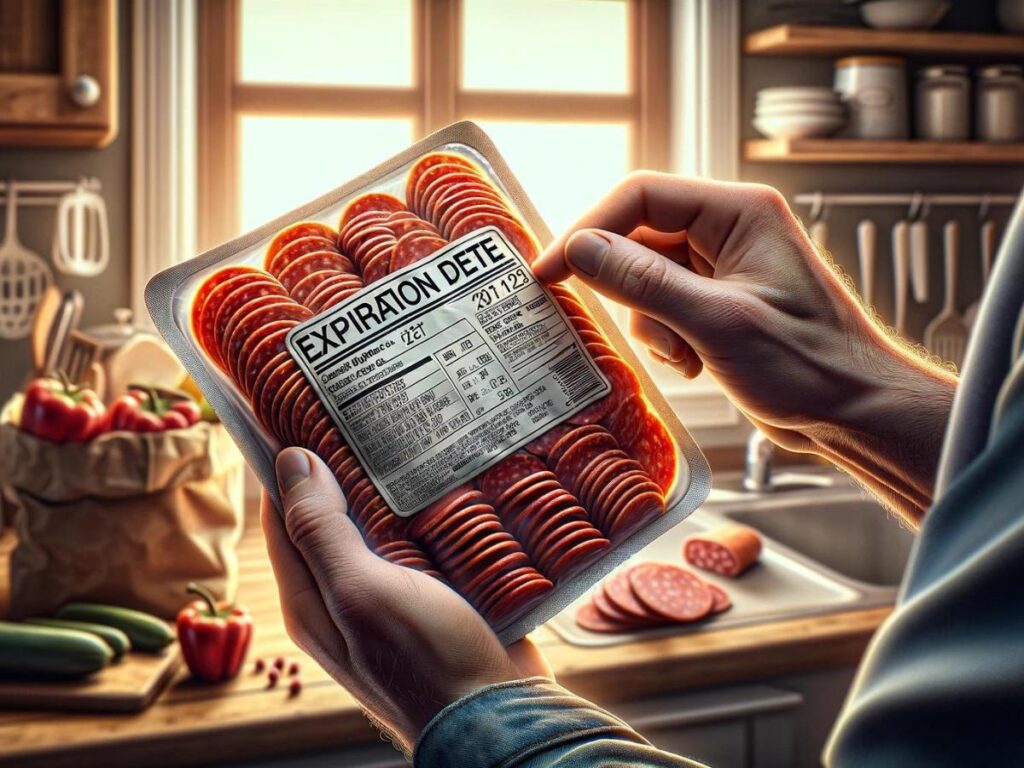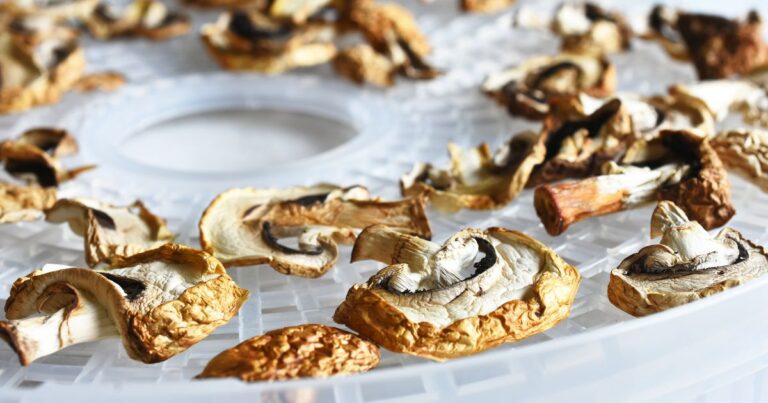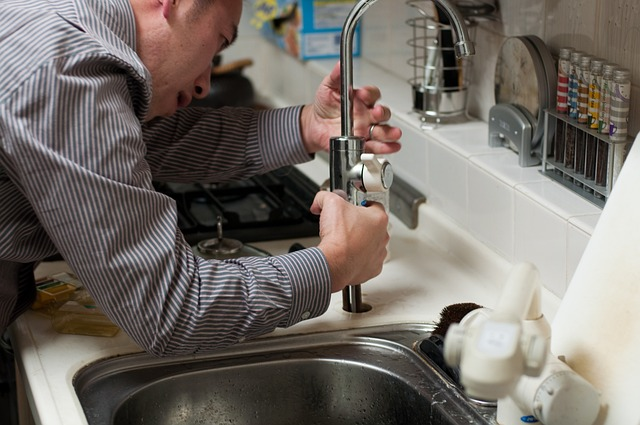Sliced Pepperoni Puzzle: How to Know When It’s Time to Say Goodbye
It’s a shared kitchen problem – you’re staring at that packet of pepperoni, wondering if it’s still good or if it’s time to part ways. Let’s Find Out How To Tell If Pepperoni Is Bad or Not.

Don’t Let Your Pepperoni Sausage Ruin Your Friday Night
Picture this: it’s Friday night, and you’re ready to enjoy your favorite comfort food—pizza.
The dough’s perfectly kneaded, the sauce is simmering with savory goodness, and the cheese bubbles like molten gold.
But One star player can make or break this culinary masterpiece—the cured meat sausage they Called “The Pepperoni.”
This humble yet iconic topping has a special place in our hearts, adding that extra kick to every slice.
The trouble is, it’s straightforward to be deceived by pepperoni. A glance into your fridge can reveal a pack of these spicy cured sausage circles not properly stored in containers that have seen better days, like a squished old popsicle at the bottom of the freezer.
A tinge of doubt might mask that vivid pink and dark red hue, and you can’t help but wonder, “Does Pepperoni Go Bad, or should they hit the road?”
You’re not alone in this pepperoni shelf-life predicament. Most of us have a peculiar belief that pepperoni is indestructible and that it never goes bad.

Let’s make sure next pizza night is as delicious as you imagine.
So, if you’ve ever had that lingering question or felt the need to play detective with your pizza toppings, you’re in the right place.
Together, we’ll embark on a culinary journey of discovery and ensure that the pepperoni on your pizza is always as fresh and flavorful as it should be.
Let’s dive into the world of pepperoni, explore its nuances, and become seasoned experts in preserving the perfection of our pizza slices.
Welcome to your ultimate guide on how to tell if pepperoni is bad, and let’s make every pizza night a savory success!

It’s easy to mistake good unopened pepperoni for bad; many misunderstand that this beloved cured pork topping never spoils.
Additionally, pepperoni contains BHT to help protect its flavor, emphasizing the commitment to quality and regulatory compliance.
In this guide, we’ll dispel the myth and explore five essential ways to assess whether your sliced pepperoni has seen better days, ensuring your next pizza night is nothing short of perfection. Preservatives like BHA are crucial in maintaining the product’s taste and freshness.
5 Quick Ways To Tell if Pepperoni is Bad: A Comprehensive Guide

Let’s Jump into the finer details of pepperoni and explore five reliable ways to tell if your pepperoni has gone bad.
1. The Visual Clues

The first step is to trust your eyes when you open your fridge and spot that neglected pack of pepperoni.
Fresh pepperoni is a vibrant, enticing shade of red.
If it appears faded, discolored, or worse, turns brown or gray, it’s a glaring sign that something’s amiss.
Even natural mold, relatively rare in properly stored pepperoni, indicates spoilage.
So, scrutinize that pepperoni closely; if anything seems off in terms of color or mold, it’s best to discard it.
2. The Scent Test

The nose knows! Take a moment to bring a few slices of that opened pepperoni close to your nose.
Fresh pepperoni boasts a delightful, spicy, and savory fragrance.
However, if you detect any sour, rancid, or plain foul odors, it’s time to wave goodbye before you risk food poisoning.
A peculiar or unpleasant smell is an unmistakable signal that your pepperoni is no longer the tasty topping you’d want on your pizza.
3. The Texture Check

To truly understand how to tell if pepperoni is bad, you must get tactile.
Reach out and feel the whole stick of pepperoni. It should be firm with a slight oily surface.
A Sign of spoilage if the natural casing feels slimy, mushy, or slightly cheesy sticks to your fingers.
Fresh pepperoni should have a pleasant resistance; anything less indicates it’s past its prime.
4. Packaging, BHA, and Expiration Date

Your pepperoni’s packaging can offer vital clues.
Inspect it closely; if it’s damaged, compromised, or bloated, it might indicate gas buildup, which is a significant red flag.
Additionally, check the expiration date on the packaging.
If it has surpassed the date, you should approach it cautiously and perform the checks above to evaluate its freshness.
5. The (Optional and Cautious) Taste Test

For those of us who remain unconvinced after the visual, scent, and texture checks, there’s the taste test, though it’s not recommended.
A tiny nibble might provide clarity, but caution’s essential.
If your senses already hinted at something amiss, it’s wiser not to proceed with tasting, as spoiled food can lead to discomfort or illness from lactic acid bacteria.
Factors Affecting Pepperoni’s Shelf Life
The DEALiciousness Final Verdict: BHT Considerations

There you have it—five dependable ways to decipher whether your pepperoni has gone bad or is ready to make your next homemade pizza creation unforgettable.
Keep these guidelines in mind, and you’ll be well-prepared to ensure your culinary adventures are always as delicious as they should be.
So, next time you’re in doubt, remember that when in doubt, throw it in the trash can! Your taste buds and your tummy will thank you.
What do Bad pepperoni Sticks look like? When Your Request Unsuccessful
Discoloration: Bad pepperoni sticks may appear discolored. They can turn from their typical bright red, like a chili pepper to a dull brown, gray, or even greenish hue. This color change is a clear indicator of spoilage.
Slimy or Oily Surface: Spoiled pepperoni sticks may have a slimy or excessively oily surface. Fresh pepperoni sticks have a slight oily sheen, but it’s a sign of spoilage if the dry sausages feel overly greasy.
Mold: While it’s relatively rare, mold can develop on pepperoni, especially if stored improperly. If you spot any mold patches on the stick’s surface, it’s a sign that the pepperoni is no longer safe to consume.
Off Odor: Fresh pepperoni sticks have a distinct spicy and savory aroma. Spoiled pepperoni sticks, on the other hand, can emit a sour, rancid, or foul odor.
Texture Changes: Bad pepperoni sticks can exhibit changes in texture. They might become mushy or slimy, a sign of spoilage. Fresh pepperoni sticks should be firm and slightly pliable.
Visible Signs of Deterioration: If you notice any unusual spots, wrinkles, white stuff or irregularities on the surface, it’s a sign that the pepperoni stick has gone to the other side.
Does pepperoni go bad in the fridge? A Common Request
Can Pepperoni go bad in the fridge if it’s not stored properly or past its recommended storage duration?
While pepperoni is a cured meat product with a longer shelf life than fresh meats or meat mixture, it’s not immune to shelf stable spoilage. But before throwing the rest into your kitchen composter, Here are some factors to consider:
1. Storage Conditions: Proper refrigeration is crucial. Store pepperoni in the fridge at or below 40°F (4°C). If the temperature fluctuates significantly or if it’s stored above this temperature, the pepperoni may spoil more quickly.
2. Packaging: Packaging dry sausage and sliced pepperoni also affects shelf life. Ensure the packaging is airtight and sealed to prevent exposure to air and moisture, which can lead to spoilage on your average sausage.
3. Use-By Date: Check the packaging’s expiration date or “use by” date. If the unopened package of dry pepperoni has passed this date, it should be used cautiously, even if the deli meat appears in good condition.
4. Visual and Sensory Inspection: Use your senses to assess the pepperoni’s freshness. Check for any signs of discoloration, sliminess, an off odor, or mold. If any of these signs are present, the pepperoni has gone bad.
5. Storage Duration: Even if stored properly, pepperoni will not last indefinitely in the fridge. Typically, unopened pepperoni can last for several weeks in the refrigerator, while opened packages freeze pepperoni may have a shorter shelf life.
6. Cross-Contamination: Ensure the sliced pepperoni is stored separately from other food items to prevent cross-contamination.
Remember that food safety is vital. If there’s any doubt about Incapsula incident ID and the freshness of your pepperoni and processed meats, it’s best to discard it.
Figuring out how does pepperoni last or determining shelf life can be tricky, but take the time Consuming spoiled food can lead to foodborne illnesses, so it’s important to exercise caution and follow recommended storage guidelines to enjoy your pepperoni safely in most recipes.
Pepperoni is made with salt and hung in a drying room with as much air as possible to maximize shelf life.
The Best Way to Store Pepperoni Like a Bridgford Pepperoni Stick
Refrigerate: If pepperoni is sold refrigerated, always keep it in the refrigerator. Refrigeration maintains a consistent temperature, which is vital for preserving the freshness of cured meats.
Temperature: Store pepperoni at or below 40°F (4°C). Ensure that your refrigerator maintains this temperature range.
Seal Properly: Ensure that the pepperoni package is sealed airtight. If the original packaging has been opened or is not a resealable bag, transfer the remaining slices or pepperoni sticks to an airtight container or plastic wrap.
Keep It Dry: if Sold Unrefrigerated, Moisture can lead to the growth of mold and spoilage. Wrap the unrefrigerated pepperoni or unrefrigerated sticks in paper towels before placing it in the airtight container to prevent moisture buildup.
Avoid Cross-Contamination: Store pepperoni separately from other foods to prevent potential cross-contamination of harmful bacteria to prolong shelf life.
Check the Expiration Date: Before purchasing or using unopened pepperoni sticks, check the packaging’s sell-by date, expiration date, use-by date, or even a best-by date to see how long pepperoni lasts. Choose products with later dates to ensure a longer shelf life.
Rotate Stock: If you have multiple packages of sliced pepperoni, use the “first in, first out” rule. Consume the oldest sliced pepperoni first to ensure freshness.
Inspect Regularly: Periodically check your pepperoni stick or slices for any signs of spoilage, including changes in color, texture, or off smell odor. If you notice any of these signs, it’s time to discard the product.
Freezing (Optional): If you have an excess of whole pepperoni sausage and Genoa salami or want to extend the shelf life of pepperoni further, you can freeze it. Place individual slices or portions in an airtight container or freezer bag and ensure they’re well-sealed. Label the leftover pepperoni package with the date for reference. Properly freezing pepperoni can last for several months. You Can Also Use Aluminum Foil or freezer wrap to prevent freezer burn
Similar Articles You Will Love:







